Oktoberfest: It’s All About the Bier
Here’s the scene: herren in lederhosen and frauleins in racy dirndls standing on their seats, beers in hand, swaying and bellowing out “Sweet Home Alabama.” A frat party? Nope, just 8 p.m. in the Paulaner tent at Oktoberfest, Munich’s boozy extravaganza.

We spent four days at the party, and we learned some fun and surprising things at the world’s biggest fair:
It is a continuation of one rockin’ wedding party
Back in October of 1810, Crown Prince Ludwig married Princess Therese, and the entire city of Munich was invited to attend the royal wedding festivities. It was apparently such a good time that they’ve continued the party for 200 years. At some point, the festival was moved up to September to allow for better weather conditions, but the last day of the festival is still the first Sunday of October.

It feels less like Mardi Gras and more like the Bavaria State Fair
Oktoberfest feels like a fair — there are carnival games, greasy snacks, and yak-inducing rides. Vendors sell sugar-coated nuts (that smell divine), decorated gingerbread cookies that you wear around your neck, and (of course) bratwursts of every kind. During the day, we saw both local schoolkids and a nursing home there on field trips. (Dear future children — please sign your father and me up for that nursing home!).
But it’s still Oktoberfest — you won’t find these beer halls at the Strawberry Festival
There are six major breweries in Munich, and each one has at least one massive tent that it erects each year on the Theresienwiese (the Oktoberfest fairgrounds). Don’t let the word “tent” deceive you — these are massive halls with steel support structures, full kitchens and indoor plumbing. And they are huge — the biggest seats almost 7,000 inside and 3,000 more outside. Imagine a football field full of benches, with an oompah band on the 50-yard line. The whole point of these halls is to drink beer, eat, and chat with friends both old and new.
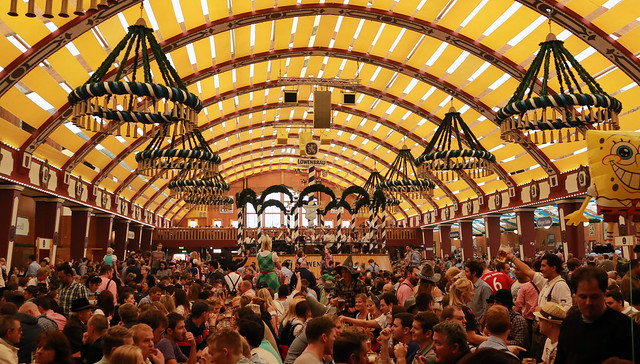
Day and night at Oktoberfest are as different as day and night
During the day, Oktoberfest is relaxed. Even when we went with a large-ish group, we easily found seats in one of the big tents. People are drinking and talking, but it’s not too rowdy. At night, well, it’s less oompah and more Lynyrd Skynyrd. It’s also much more difficult to snag a spot in the tents. Most tents clear everyone out around 4 p.m. to clean up and make way for the people who reserved entire tables for the evening. We found that it is possible for two people to squeeze in during the week. A larger group without reservations would probably have trouble. And don’t think you can just skulk on the periphery: you must be seated to be served.
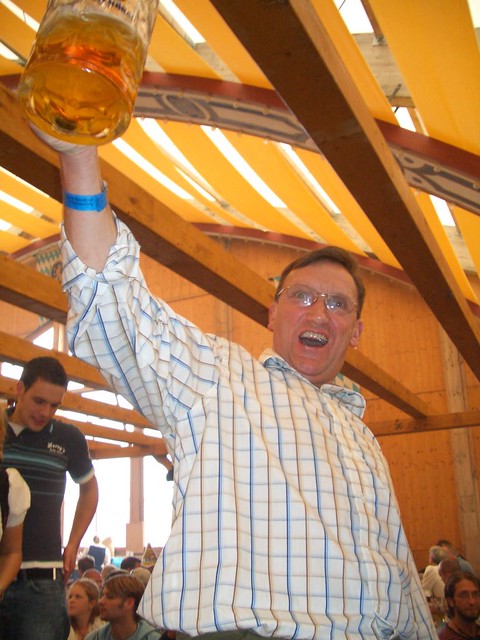
Almost everyone was wearing traditional German garb. Seriously.
Although my personal opinion is that only little boys look cute in lederhosen, the dirndl (the traditional German ladies’ apparel of peasant blouse, low cut dress and apron) is really flattering. They’re available everywhere in Munich during Oktoberfest, but I have to think that they’d be less expensive if you bought them beforehand.
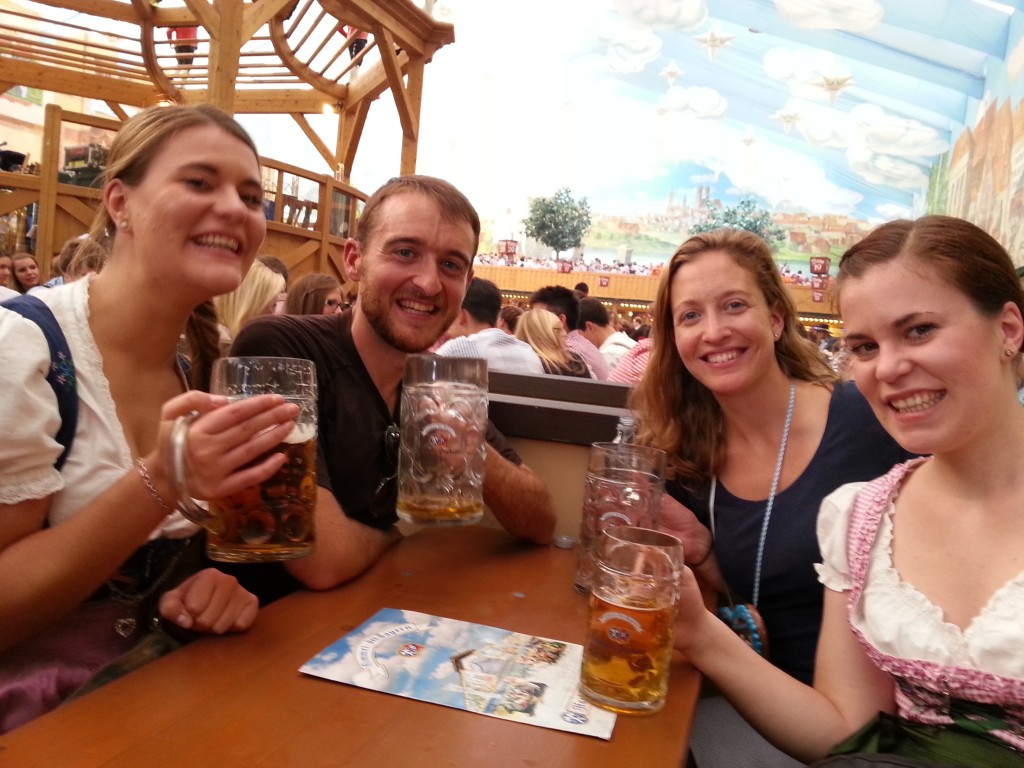
Big beers, big chickens, big ladies
You came to Oktoberfest to drink beer, right? Munich has some of the best beer in the world. In 1516, the Germans implemented the Reinheitsgebot, probably the first food-and-drug type regulation, which decreed that only three ingredients may be used to brew beer: water, barley, and hops.
I love a nice bitter IPA as much as the next yuppie American with too much disposable income, but German beer is nice because it’s so clean. At Oktoberfest, you order beers by the maß (“mas”), basically a huge stein holding a liter of beer. Although I could barely lift my maß with both hands, the beefy Bavarian waitresses can handle a dozen at a time. If you want to last all day, it’s advisable to order lemonade to mix in with your beer (a surprisingly good combination!).

As any self-respecting college kid can tell you, you shouldn’t drink on any empty stomach, at least if you don’t want to end up spending your Oktoberfest passed out on the fairground’s hill.
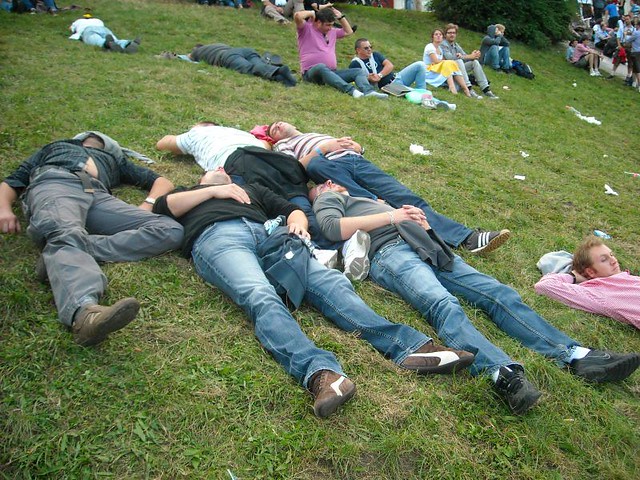
All the tents sell traditional German food, most of it quite good. Some things to try: a crispy and delicious roasted half chicken; pretzels; spatzle (cheese noodles); roasted pork or beef; sauerkraut; and weisswurst, a white sausage. At the Ochsenbraterei Spaten tent, they roast an entire ox over the flames! Apparently, the tent roasts more than 100 oxen during Oktoberfest.
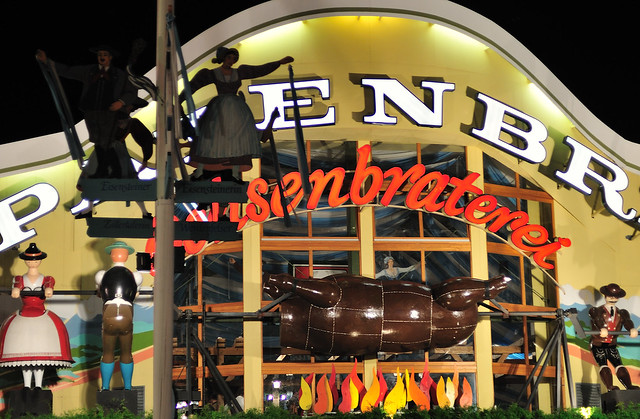
Our German friend Anja suggested we try brotzeit, which literally means “bread time.” It’s a plate of bread, buttery and cheesy spreads, and various meats. Brotzeit can also be a light meal, eaten in the late morning or early afternoon, typically at a biergarten.
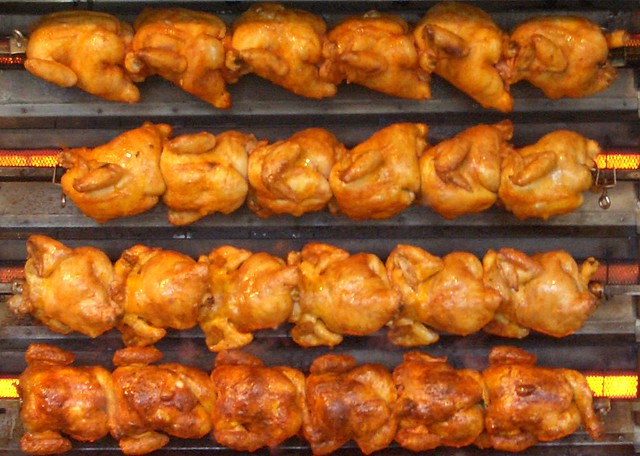
And if you want to dry out for a day …
Munich is a super bike-friendly city. It’s flat, there are bike lanes and parks everywhere, and drivers actually look out for bikers. We rented bikes for a day and tooled around town, pedaling through the old town and the Englischer Garden, past the Residenz and Marienplatz, stopping for a break at the Deutsches Museum. It was a beautiful way to spend the day and a great way to work off that beer.
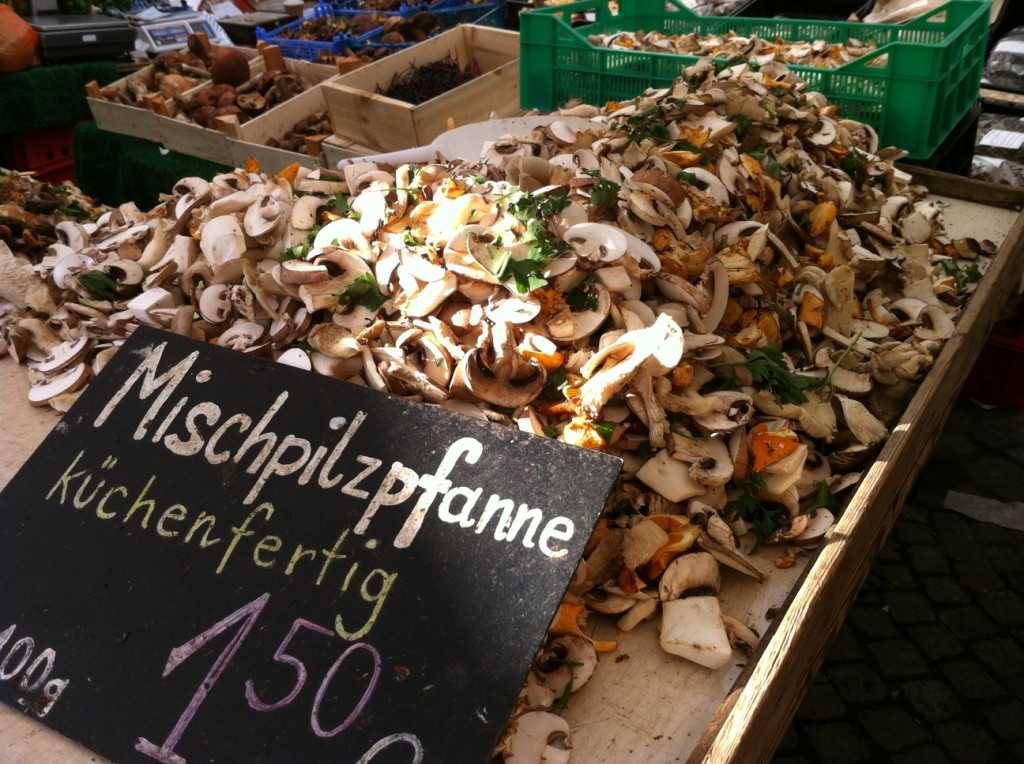
You can also visit Neuschwanstein Castle, the Disney-esque castle of Mad King Ludwig (the grandson of the Ludwig whose wedding kicked off the Oktoberfest par-tay), and Dachau, a grim Nazi concentration camp, as day trips from Munich. We visited both sites in 2007, and they’re well worth time away from the tents.
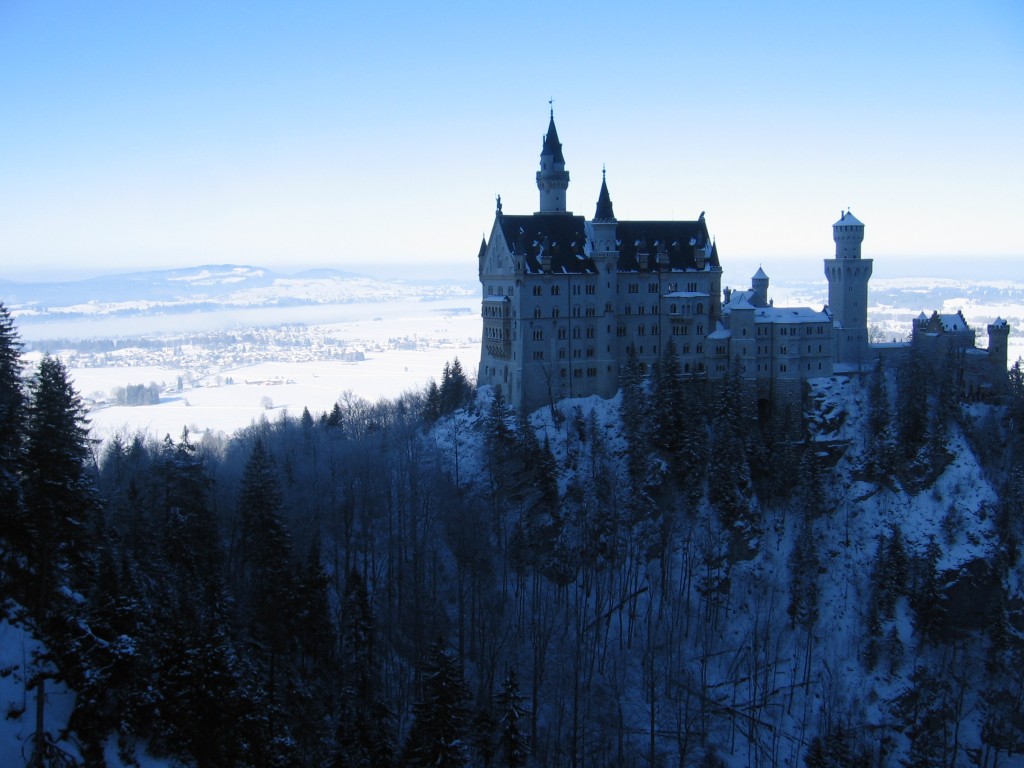
Finally, seeing a Bayern Munich soccer match at Allianz Arena is a great way to spend an evening. We got tickets to a match against Hanover and it was a blast. These people are crazy for their football!
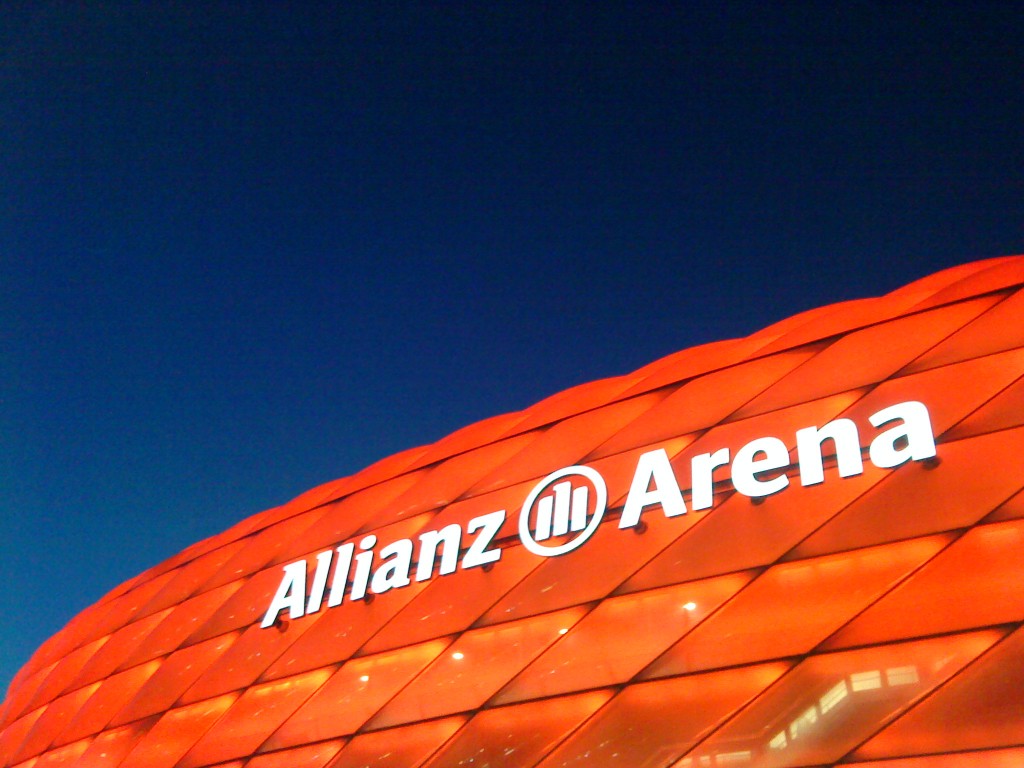
Oktoberfest ain’t cheap
We didn’t go to Oktoberfest to save money, and neither should you. Those big steins of beer are 10 Euros a pop. A half chicken will set you back the same, and hotel rates are sky high. Here’s how much you’ll spend at a typical day at Oktoberfest (in Euros):
| Metro ride to and from the fairgrounds | 5 |
| 30 | |
| Half chicken | 10 |
| Pretzels and other snacks | 15 |
| Grand Total | 60 |
You’re looking at 60 Euros (about $80) per person per day as a conservative estimate. Tack on your flight, $300 – $400 a night for a hotel (we used Starwood points at the Sheraton Westpark — walking distance to the Oktoberfest grounds!), $100 for your bosom-boosting dirndl, perhaps a bike rental or day trip costs …. too bad the party isn’t on the royal family’s deutsche mark anymore.
Still, Oktoberfest is fun, cheesy, over the top, a chance to see rigid and rule-abiding Germans (seriously, these people will not walk across an empty crosswalk without the green-man-go-ahead) let loose. And worth every Euro. Prost!
